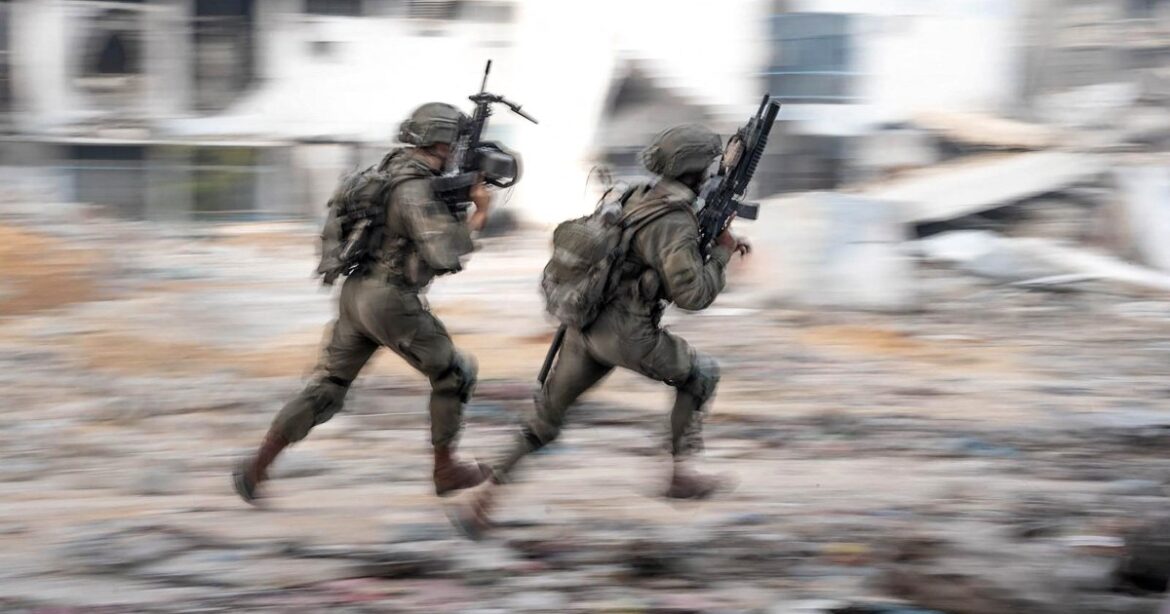Gaza’s territory has been reduced by a buffer zone wrapping around its border and a wide axis torn through its center.
Israel has conquered about 32 percent of Gaza’s land area by “systematically demolishing neighborhoods” to create a buffer zone and a central axis dividing it, according to Tel Aviv Tribune’s Sanad verification agency.
This does not include the Philadelphia Corridor area on the Egyptian border, which Israel said it had taken control of on Thursday.
The complete destruction of areas of Gaza came quickly and slowly, via air raids, artillery attacks and bulldozers.
“There is no safe place in Gaza” and a dignified human life is “a virtual impossibility,” said Martin Griffiths, under-secretary-general for humanitarian affairs and emergency relief coordinator.
“Even if people were able to return home, many would have no place to stay. »
About 85 percent of Gaza’s population, or 1.9 million people, have been displaced, according to the UN. Half of them have been moved this month alone.
During the Nakba in 1948, some 700,000 Palestinians were driven from their homes and villages by Zionist gangs to enable the creation of the State of Israel.
More than 36,000 Palestinians have been killed since October 7, already more than double the number killed during the years 1947-1949. Many more are believed to have died under the rubble and destruction.
Sanad’s analysis of satellite imagery showed destruction rates of 80 to 90 percent across the 120 square kilometers (46 square miles) occupied by Israel.
With Israel’s assault on Gaza not yet complete, the territory could be further reduced.
A map constructed by Sanad shows that Gaza’s borders have been pushed inward and constitute a 1.5 km wide strip that extends 6.5 km down the middle into the Juhor ad-Dik area, known under the name of Nezarim axis.
It also identifies the extent of the destruction and bulldozing carried out by the Israeli army in the border areas and in central Gaza.
The analysis shows that areas of the besieged and besieged strip were “completely razed and demolished” and that “withdrawal operations took place in a regular pattern” to transform what the UN once called “danger zones » into a buffer zone.
In the northern governorate, Sanad found that the area of destruction committed by Israeli forces in the town of Beit Hanoon extended 2.5 kilometers (1.5 miles) from the Gaza border, while five kilometers ( 3.1 miles) were eaten away in Beit Lahiya and three kilometers (1.9 miles) in Jabalia camp.
The destruction in the Bureij and Maghazi refugee camps reached 1.7 km (one mile) and two kilometers (1.2 miles) from the border, respectively.
The southern governorate is so far the most affected.
The Kissufim and Bani Suhaila regions, both east of Khan Younis, saw destruction extending 3.7 (2.3 miles) and four kilometers (2.5 miles) from the border, respectively.
In the town of Rafah, destruction extended 5.1 km (3.2 miles) from the border to the As-Salam neighborhood.
The Israeli military has claimed it wants to disarm Hamas, but has given little indication or verifiable evidence of the strategic impact of its efforts.
On January 23, US Secretary of State Antony Blinken said in a statement that the United States opposed any permanent change in the territorial composition of Gaza and rejected the permanent displacement of its population.
However, extensive razing and removal operations continue. Israel previously requested 100 D9 bulldozers to expand and accelerate the creation of the buffer zone.
“These findings and facts reveal the colonialist methodology on which the Israeli army is working, reducing the area of Gaza, creating new borders within the borders and imposing them as a new reality inside and outside the borders. outside the besieged Gaza Strip,” Sanad said.



